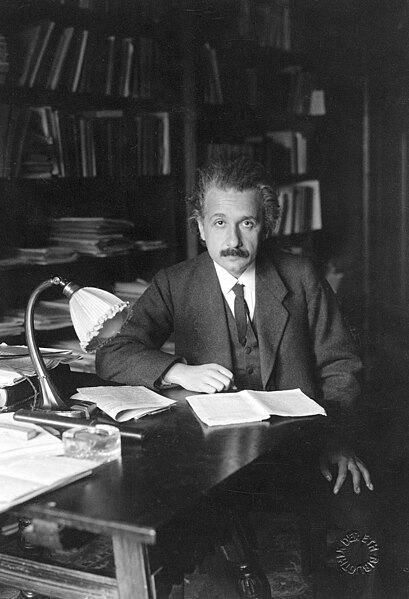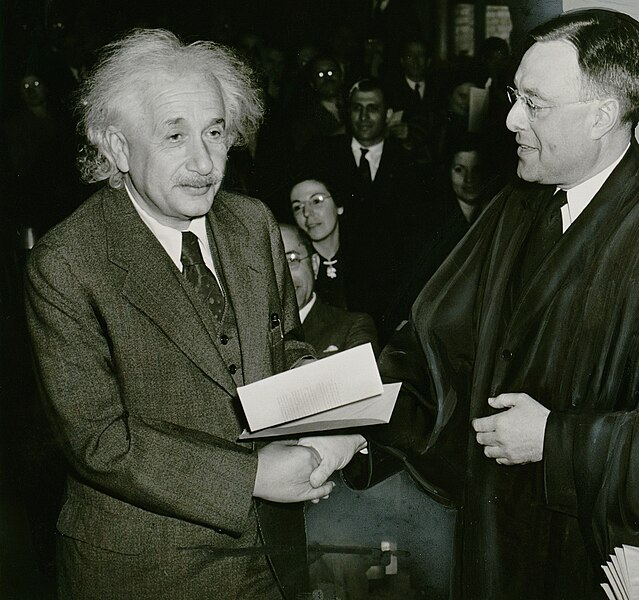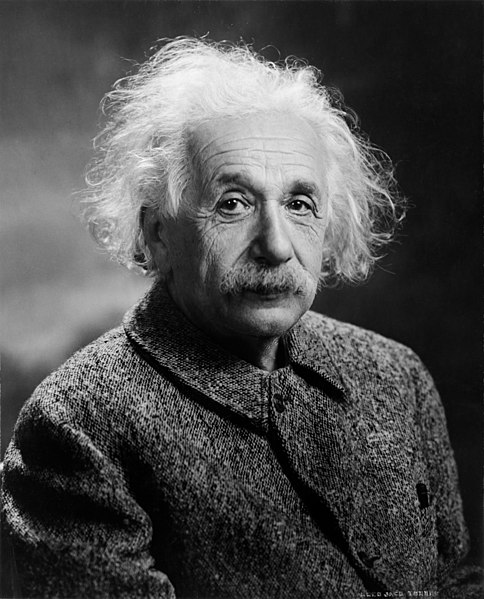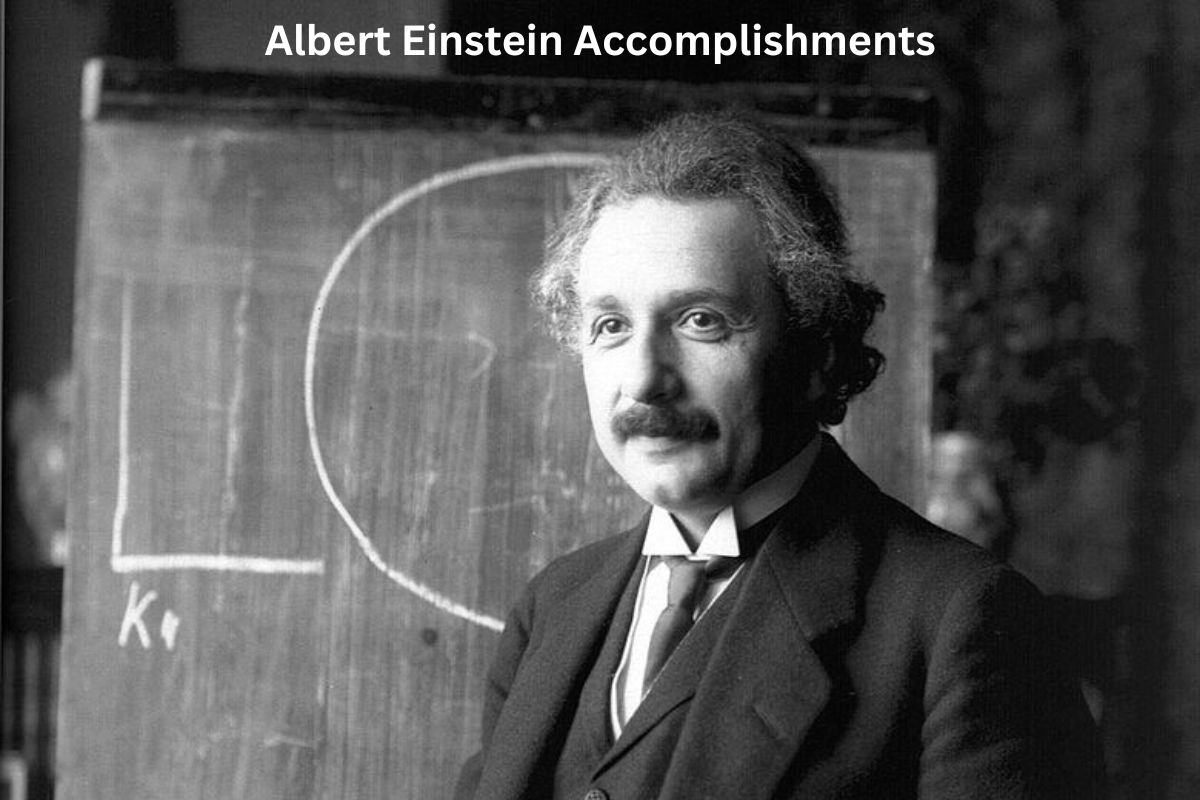Albert Einstein, born on March 14, 1879, in Ulm, Germany, was a renowned theoretical physicist whose contributions revolutionized our understanding of the universe.
His groundbreaking work in the early 20th century encompassed the theory of relativity, the photoelectric effect, and significant contributions to quantum mechanics.
Beyond his scientific achievements, Einstein was a passionate advocate for peace and civil rights, leaving an indelible mark on both science and society.
In this overview, we will delve into the life and accomplishments of this iconic figure in the world of physics and humanitarianism.
Accomplishments of Albert Einstein
1. Theory of Special Relativity (1905)
In his 1905 paper, “On the Electrodynamics of Moving Bodies,” Einstein introduced the special theory of relativity. This theory revolutionized our understanding of space and time by proposing that the laws of physics are the same for all observers in uniform motion.
Also Read: Facts About Albert Einstein
Einstein’s theory introduced the concept of relative simultaneity, where events that appear simultaneous to one observer may not be simultaneous to another moving relative to the first observer.
One of the most famous outcomes of special relativity is the equation E=mc^2, which demonstrates the equivalence of mass (m) and energy (E) and has profound implications for nuclear physics and the development of atomic energy.

2. Photoelectric Effect (1905)
In the same year as his special theory of relativity, Einstein published another groundbreaking paper on the photoelectric effect. This phenomenon occurs when light, typically in the form of photons, strikes a material surface and liberates electrons from it.
Also Read: Timeline of Albert Einstein
Einstein explained the photoelectric effect by proposing that light energy is quantized into discrete packets of energy, now known as photons. He suggested that the energy of these photons is directly related to their frequency, and this insight provided crucial support for the emerging field of quantum mechanics.
For his work on the photoelectric effect, Einstein was awarded the Nobel Prize in Physics in 1921.
3. Theory of General Relativity (1915)
Building on his special theory of relativity, Einstein developed the general theory of relativity, which is a theory of gravitation.
Unlike Newton’s law of universal gravitation, which described gravity as a force, Einstein’s theory described gravity as the result of mass and energy warping the fabric of spacetime itself.
General relativity made a groundbreaking prediction: the bending of light by gravitational fields. This prediction was confirmed during a solar eclipse in 1919 when Arthur Eddington observed stars whose light had been bent by the sun’s gravity, providing empirical evidence for Einstein’s theory.
General relativity has become a fundamental theory in modern physics and has implications for our understanding of the universe on both cosmic and quantum scales. It continues to be a cornerstone of theoretical physics to this day.
4. Brownian Motion Explanation (1905)
Brownian motion is the random, erratic motion of small particles suspended in a fluid. In 1905, Einstein provided a theoretical explanation for this phenomenon.
His explanation was based on the kinetic theory of gases and molecular motion. He proposed that the observable, erratic movement of particles was the result of constant collisions with invisible, rapidly moving molecules in the fluid.
This work provided strong evidence for the existence of atoms and molecules, which had been a topic of scientific debate for centuries. Einstein’s explanation helped validate the kinetic theory of gases and contributed to our understanding of the atomic and molecular nature of matter.

5. Mass-Energy Equivalence (E=mc^2) (1905)
In the same year as his other major contributions, Einstein formulated the famous equation E=mc^2, where E represents energy, m represents mass, and c represents the speed of light in a vacuum.
This equation reveals a profound relationship between mass and energy, suggesting that mass can be converted into energy and vice versa. It implies that a small amount of mass can release a vast amount of energy, a concept that would later play a pivotal role in nuclear physics.
The mass-energy equivalence equation has practical applications, most notably in the development of nuclear weapons and nuclear energy technology. It fundamentally changed our understanding of the interplay between matter and energy in the universe.
6. Contributions to Quantum Theory
While Albert Einstein is best known for his theory of relativity, he also made significant contributions to the emerging field of quantum mechanics, although he had reservations about certain aspects of it.
His work on the photoelectric effect, for instance, demonstrated the particle-like nature of light. He proposed that light is composed of discrete packets of energy called photons, and the energy of photons is directly proportional to their frequency.
Einstein’s efforts to understand the quantum behavior of particles helped lay the foundation for quantum mechanics, which is now a fundamental theory in physics. His work inspired further research and led to the development of quantum theory by other scientists, including Max Planck and Niels Bohr.

7. Unified Field Theory Pursuit
Einstein spent a significant portion of his later career attempting to develop a unified field theory. His goal was to create a single, elegant framework that could unify all of the fundamental forces in the universe, including gravity and electromagnetism.
His efforts led to the development of various theories and equations, but he was unable to achieve a fully successful unified theory. Nevertheless, his work in this area laid the groundwork for future generations of physicists to continue the quest for a unified theory of everything.
Einstein’s pursuit of a unified field theory reflects his deep commitment to understanding the fundamental laws of the universe and his dedication to the beauty and simplicity of the natural world.
8. EPR Paradox (1935)
In 1935, Einstein, along with collaborators Boris Podolsky and Nathan Rosen, published a paper known as the EPR paradox. This thought experiment challenged the completeness and interpretation of quantum mechanics.
The EPR paradox presented a scenario in which it appeared that two particles could be instantaneously influenced by each other, even when separated by vast distances, which seemed to violate the principles of special relativity. This paradox raised questions about the concept of quantum entanglement and the nature of physical reality at the quantum level.
Although the EPR paradox itself was eventually resolved through the development of quantum theory, it played a crucial role in stimulating debates and discussions about the philosophical implications of quantum mechanics and the nature of reality.
9. Theory of Brownian Motion (1905)
As mentioned previously, Einstein’s explanation of Brownian motion in 1905 provided compelling evidence for the existence of atoms and molecules. He demonstrated how the seemingly random motion of particles suspended in a fluid could be explained by the kinetic theory of gases.
This work contributed to the broader acceptance of the atomic theory, which posited that all matter is composed of indivisible atoms, and that these atoms are in constant motion, even in seemingly stationary substances.
Einstein’s contribution to the understanding of Brownian motion is considered one of his early successes and a significant step forward in the development of modern physics.
10. Advocacy for Peace and Humanitarian Causes
Beyond his scientific achievements, Albert Einstein was known for his strong advocacy for peace, civil rights, and humanitarian causes.
He was a vocal critic of nuclear weapons and was involved in various peace initiatives. He signed the Russell-Einstein Manifesto in 1955, which called for the abolition of nuclear weapons and highlighted the dangers of nuclear war.
Einstein was a staunch supporter of civil rights in the United States and was a member of the NAACP (National Association for the Advancement of Colored People). He used his influence to fight against racial segregation and discrimination.
He also played a role in the founding of the Pugwash Conferences on Science and World Affairs, which brought together scientists from around the world to discuss global security and the peaceful use of science and technology.
